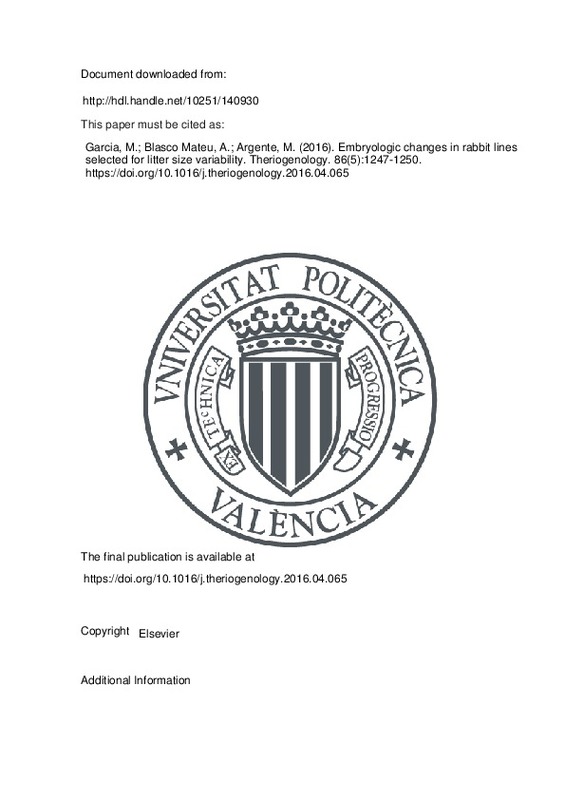JavaScript is disabled for your browser. Some features of this site may not work without it.
Buscar en RiuNet
Listar
Mi cuenta
Estadísticas
Ayuda RiuNet
Admin. UPV
Embryologic changes in rabbit lines selected for litter size variability
Mostrar el registro completo del ítem
Garcia, M.; Blasco Mateu, A.; Argente, M. (2016). Embryologic changes in rabbit lines selected for litter size variability. Theriogenology. 86(5):1247-1250. https://doi.org/10.1016/j.theriogenology.2016.04.065
Por favor, use este identificador para citar o enlazar este ítem: http://hdl.handle.net/10251/140930
Ficheros en el ítem
Metadatos del ítem
| Título: | Embryologic changes in rabbit lines selected for litter size variability | |
| Autor: | Garcia, M.L. Argente, M.J. | |
| Entidad UPV: |
|
|
| Fecha difusión: |
|
|
| Resumen: |
[EN] A divergent selection experiment on litter size variability was carried out. Correlated response in early embryo survival, embryonic development, size of embryos, and size of embryonic coats after four generations of ...[+]
|
|
| Palabras clave: |
|
|
| Derechos de uso: | Reserva de todos los derechos | |
| Fuente: |
|
|
| DOI: |
|
|
| Editorial: |
|
|
| Versión del editor: | https://doi.org/10.1016/j.theriogenology.2016.04.065 | |
| Código del Proyecto: |
|
|
| Agradecimientos: |
|
|
| Tipo: |
|







![[Cerrado]](/themes/UPV/images/candado.png)


